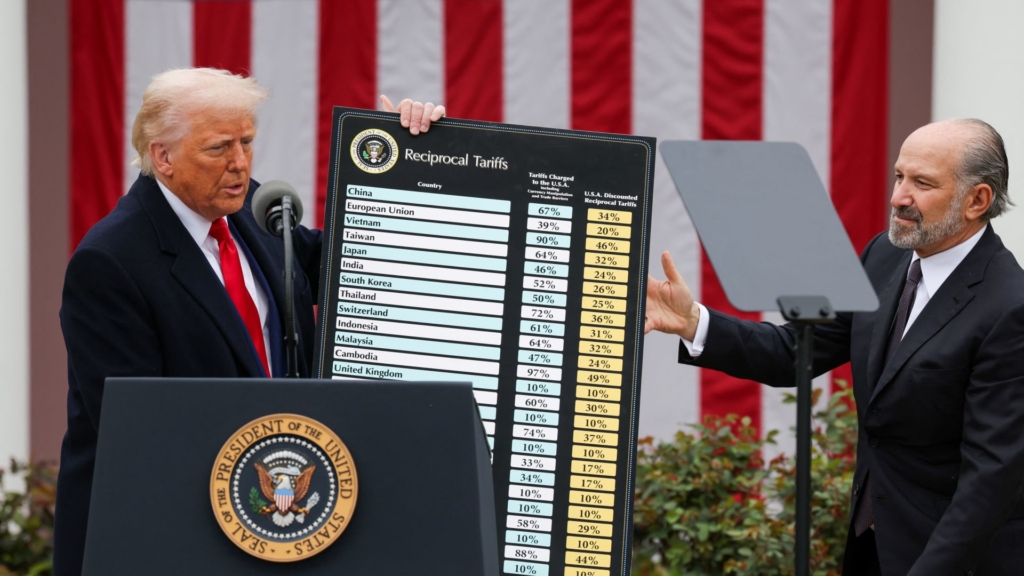On Wednesday, President Donald Trump unveiled a tariff policy expected to elevate U.S. import duties to the highest levels seen in over a century.
The announcement introduced a foundational 10% tariff on imports, alongside considerably higher, country-specific tariffs targeting major trade partners, particularly China. These differentiated rates appear to correspond with the trade imbalances the U.S. has with each respective nation.
Sarah Bianchi, chief strategist of international political affairs and public policy at Evercore ISI, indicated in a client note that the effective tariff rate is now anticipated to exceed the approximately 20% threshold established by the Smoot-Hawley Tariff Act of the 1930s, which many economists cite as a significant factor contributing to the Great Depression.
Bianchi described the announcement as “a very tough and more bearish” move that raises the average U.S. weighted tariff rate to 24%, the highest in over a century, with projections potentially reaching 27% once additional sector-specific tariffs, referred to as “232s,” are finalized.
Micheal Feroli, chief U.S. economist at JPMorgan, echoed these findings, calculating an increase in the average effective tariff rate from about 10% prior to the announcement to just over 23%. A White House official noted that there are still pending section 232 tariffs, affecting sectors like semiconductors, pharmaceuticals, and critical minerals, which could drive the effective rate even higher. Feroli also mentioned that the executive order warns of potential retaliatory tariffs by U.S. trading partners, further exacerbating the situation.
Fitch Ratings provided similar estimates, projecting that the tariff rate could reach its highest level since 1909.
The potential economic consequences of these new tariffs will likely depend on their duration and the responses from other nations. Trump and Treasury Secretary Scott Bessent indicated that the imposed tariffs could be reduced if trade partners adjust their policies accordingly.
JPMorgan global economist Nora Szentivanyi cautioned that if sustained, Trump’s tariffs could propel both the U.S. and global economies into a recession within the year.


























